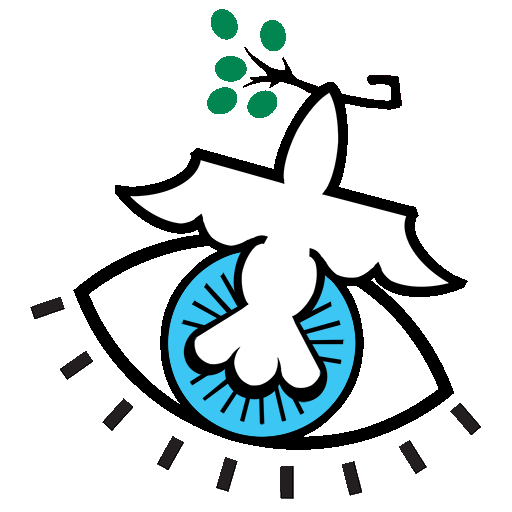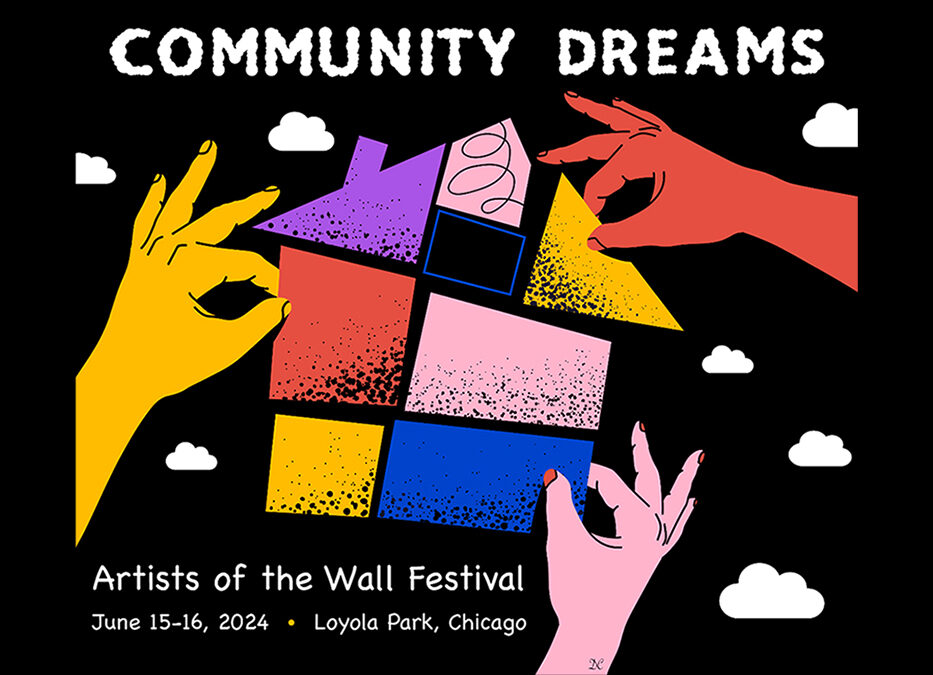In Rogers Park at Loyola Beach a seawall extends north 600 feet from Pratt Pier to where it bends west for a few extra feet into the park. Since 1993, every Father’s Day weekend, the seawall is dressed with the art work of local residents who celebrate the richly diverse cultures they enjoy as citizens of Rogers Park.

Prior to the Father’s Day weekend, the previous year’s murals are painted over and the seawall is divided into 160 pristine artist spaces ready for the new creations.
For 31 years without factionalism or ideological warfare, individuals and teams of collaborating artists from the various communities of Rogers Park have come together joyfully to express their appreciation of their neighbors and of the natural world in which we live, work, and play. I say ‘We’ because I am a proud resident of Rogers Park.
The theme for this year’s Wall is Community Dreams.
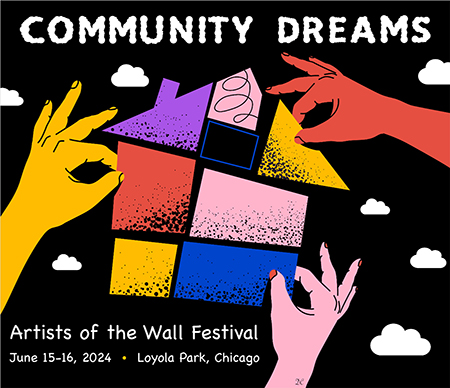
Carolen King and Deb Clause are painting a visual interpretation of the African proverb “No one shows a child the sky” to remind us that creative wonder is the natural response to the life we all share.
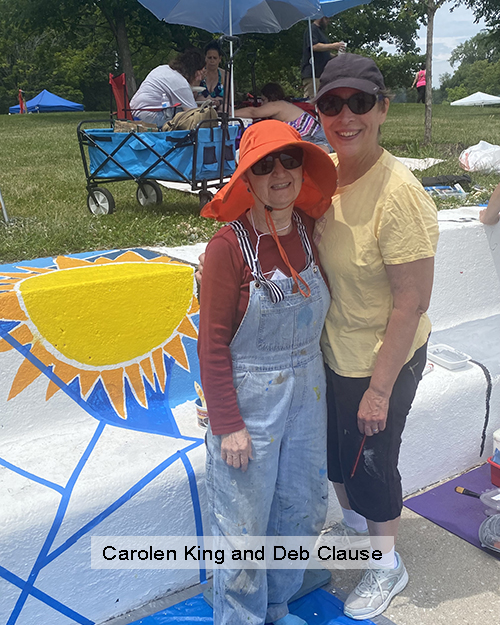
Kim and Isabella Gross and Riley Kelly are painting a visual celebration of some of the reasons they love living in Rogers Park, one of which is the strong presence of LGBTQ peoples who have always contributed greatly to the cultural life of Rogers Park. They depict the Pratt Pier lighthouse as a queer beacon of hope and safety.
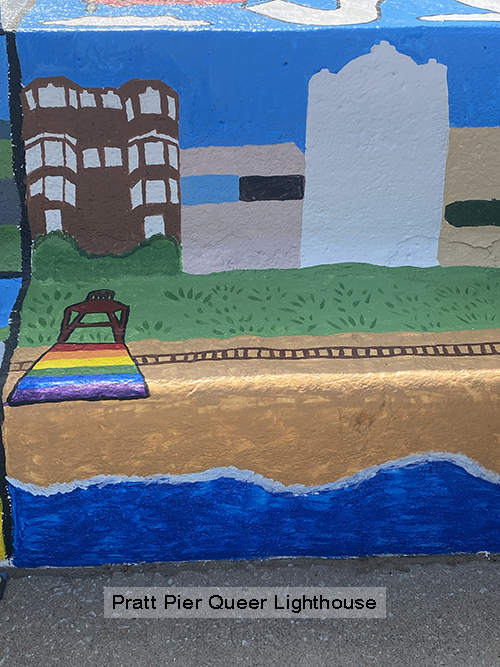
Diana Berek, Courtney Berek-Thomas, Tea Swift, and Zalena are painting a mural statement employing the symbolism of the Red Hand that indigenous women in North America created to indicate solidarity with Missing and Murdered Indigenous Women. Diana and Courtney said they also wanted to remind us that we in Rogers Park are enjoying Pottawatomie, Ottawa, and Chippewa land.

A red handprint, usually painted across the mouth, symbolizes silenced voices and the silence and lack of interest of authorities in investigating cases where indigenous women are sexually abused, kidnapped, or murdered. Native American women are 10 times more likely to be victims of these crimes.
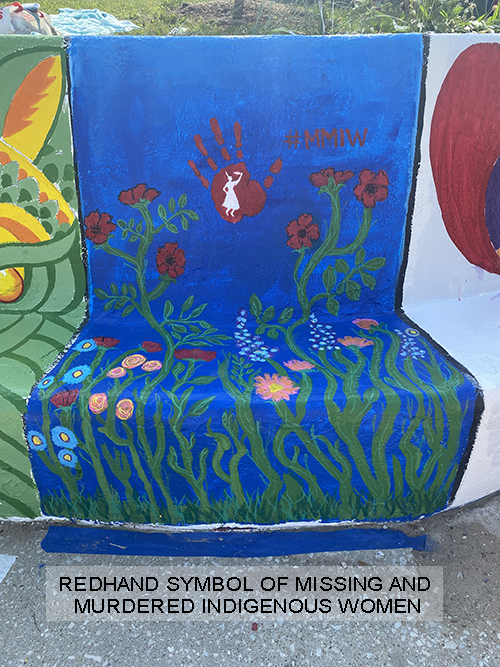
Rogers Park is 44% White, 27% Black, 20% Latin, and 5% Asian.
34 % of the citizens of Rogers Park are foreign born. 60 different languages are spoken in Rogers Park. When I walk through Loyola Park I encounter Russian, Polish, Ukrainian, French, Spanish, Arabic, Urdu, Viet, Bengali, Hindi, Greek, Yiddish, Hebrew, and many other languages I do not recognize. Sometimes I can walk from my home on Lunt to Pratt Pier and hear no English.
In 1993, 31 years ago, a group of Rogers Park residents came together to deal with the problem of gang activity and gang tagging in Loyola Park. The gangs were competing for turf and were tagging the seawall with their markers. The solution: Paint the walls with our own community art, our community hopes and dreams.
Let’s do our own tagging for the benefit of all.
_______________________
June 2024 © nicholas.patricca@gmail.com
Nick Patricca is professor emeritus at Loyola University Chicago, member of PEN San Miguel MX Chapter, member TOSOS Theatre Collective, NYC.
